Modern lab imaging demands precision-driven stage tracking software like Micro-Manager, LabVIEW, and Thorlabs’ APT for accurate sample positioning. These solutions offer micrometer-level accuracy, seamless microscope integration, and customizable automation protocols that reduce manual tracking by 15 hours weekly. You’ll find both commercial packages with advanced features and open-source alternatives like ImageJ for budget-conscious labs. Explore these options to boost your research reproducibility and potentially increase project success rates by 20%.
The Critical Role of Stage Tracking Software in Modern Laboratory Imaging
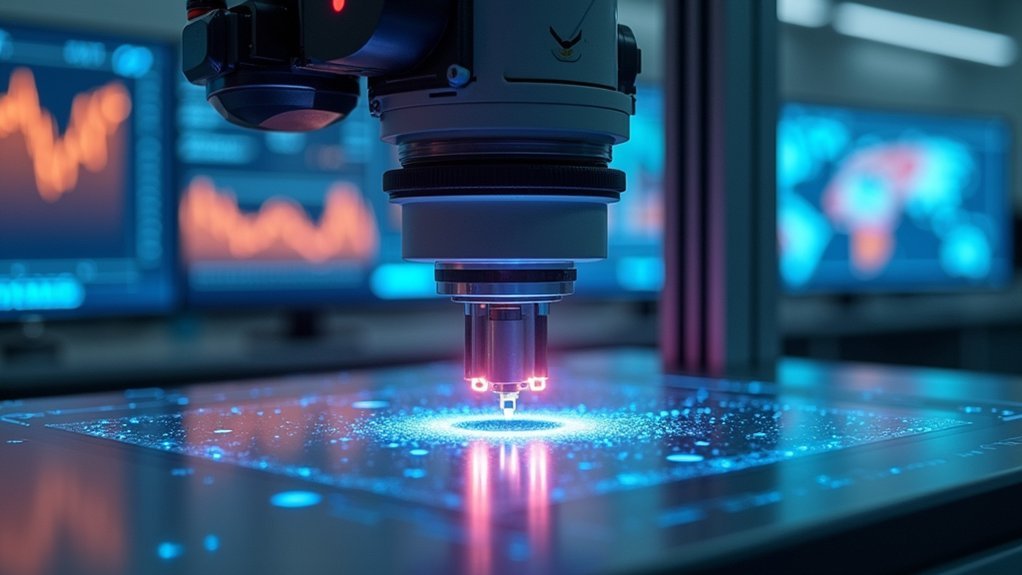
While many factors contribute to successful laboratory imaging, stage tracking software stands as a cornerstone of modern scientific visualization processes. You’ll find it essential for obtaining precise positional data of your samples, ensuring accurate imaging across varied experiments.
This technology enables real-time monitoring of sample movements, critical for high-throughput screening and multi-dimensional imaging. By implementing stage tracking software, you’re enhancing workflow automation while simultaneously reducing manual intervention and human error.
The software’s ability to support multiple imaging modalities, including fluorescence and confocal microscopy, allows you to conduct thorough analyses in a single workflow.
Most importantly, you’ll experience significant improvements in reproducibility and data integrity, leading to more reliable scientific outcomes for your research endeavors.
Key Features to Look for in Advanced Microscope Stage Tracking Solutions
What distinguishes exceptional stage tracking software from basic solutions? Look for systems offering micrometer-level positional accuracy to guarantee reproducible imaging results.
The best software seamlessly integrates with your existing microscope setup, providing real-time updates during ongoing experiments.
Advanced features should include customizable automation protocols that allow you to define specific movement paths and imaging sequences, dramatically improving workflow efficiency.
You’ll want extensive data visualization tools like 3D mapping and heat maps to analyze your samples thoroughly.
Confirm the solution you choose works across multiple imaging modalities—fluorescence, brightfield, and phase contrast—maximizing versatility for various research applications.
When these capabilities come together in one platform, you’ll experience streamlined operations and more reliable experimental outcomes without sacrificing precision.
Top Commercial Software Packages for Precision Stage Control
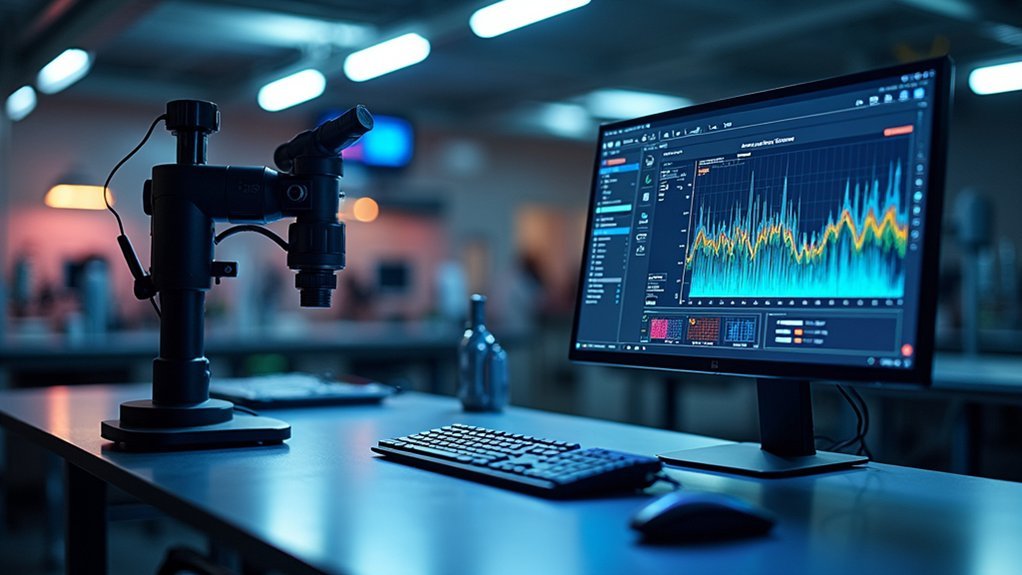
Five leading software packages dominate the precision stage control landscape, each offering distinct advantages for research applications. When selecting stage tracking software for your lab, you’ll find that Micro-Manager, LabVIEW, Thorlabs’ APT, and PI’s GCS offer the most thorough solutions for advanced automation needs.
- Micro-Manager provides open-source flexibility with extensive microscopy integration capabilities.
- LabVIEW delivers powerful customization through its graphical programming environment.
- Thorlabs’ APT excels in real-time feedback mechanisms, essential for high-precision experiments.
- PI’s GCS offers multi-dimensional control perfect for complex motion sequences.
These platforms support cloud-based access for remote monitoring, allowing you to control experiments from anywhere.
Their programmable motion paths and automated focus adjustments greatly enhance experimental reproducibility while reducing hands-on time during complex imaging sessions.
Open-Source Alternatives for Budget-Conscious Research Labs
You’ll find numerous free microscope control options like ImageJ and FIJI that deliver powerful imaging capabilities without straining limited research budgets.
These open-source alternatives include broad plugins and customization features that rival expensive commercial packages while eliminating licensing costs.
The collaborative development ecosystems surrounding these platforms guarantee continuous improvements, thorough documentation, and community support for researchers at all experience levels.
Free Microscope Control Options
While commercial microscope software often comes with hefty price tags, numerous open-source alternatives provide robust functionality without financial burden. Platforms like Micro-Manager deliver thorough microscope control capabilities that won’t strain your research budget.
These free solutions offer significant advantages for your lab:
- Extensive hardware compatibility – connect to a wide range of microscopes and cameras without proprietary restrictions
- Advanced automation features – implement time-lapse imaging and multi-channel acquisition easily
- Customizable workflows – modify and extend functionality to meet specific research needs
- Strong community support – access troubleshooting help and documentation from user networks
Limited-Budget Imaging Solutions
Research labs facing financial constraints can still access powerful imaging tools through open-source alternatives that rival their commercial counterparts. Software like ImageJ and Fiji offer robust functionality without licensing costs, allowing you to redirect funds to other research priorities.
| Open-Source Tool | Key Advantage | File Support | Community Size |
|---|---|---|---|
| ImageJ | Plugin diversity | 20+ formats | Very large |
| Fiji | Pre-packaged plugins | Cross-platform | Large |
| QuPath | Tissue analysis | WSI support | Growing |
| CellProfiler | Batch processing | Automated workflows | Medium |
These open-source software solutions provide customization through user-contributed plugins and modifiable code. You’ll benefit from active community support for troubleshooting and can integrate these imaging solutions with existing lab systems, creating a thorough workflow tailored to your specific research needs.
Collaborative Development Ecosystems
Beyond just cost savings, open-source stage tracking solutions thrive within collaborative development ecosystems that constantly evolve through community contributions.
You’ll discover platforms like ImageJ and Fiji that enable your lab to customize software for specific imaging workflows without expensive licensing fees.
- Access community-developed plugins that extend functionality for specialized tracking applications
- Integrate with diverse hardware configurations, future-proofing your research investments
- Participate in collaborative development by contributing improvements that benefit the broader scientific community
- Modify code to address unique research challenges that commercial solutions might ignore
These open-source software alternatives don’t just reduce costs—they create adaptable research environments where knowledge flows freely between labs, accelerating scientific discovery through shared technological advancement rather than proprietary limitations.
Multi-Dimensional Stage Tracking Systems for Complex Research Protocols
As laboratories tackle increasingly sophisticated experiments, multi-dimensional stage tracking systems have become indispensable tools in modern research. You’ll find these systems critical for achieving precision in your complex research protocols, allowing you to meticulously control multiple variables simultaneously.
With real-time data visualization capabilities, you can immediately analyze results and make quick adjustments to your experimental setup. These systems seamlessly integrate with robotic platforms, automating intricate imaging sequences and reducing manual intervention.
The AI-driven analytics now included in advanced tracking software enable predictive modeling of your experiments, optimizing your research workflow.
Whether you’re studying cellular dynamics or material properties, multi-dimensional tracking provides the high-resolution spatial and temporal data needed to capture minute changes that may greatly impact your findings.
Integration Capabilities With Existing Microscopy Hardware and Software
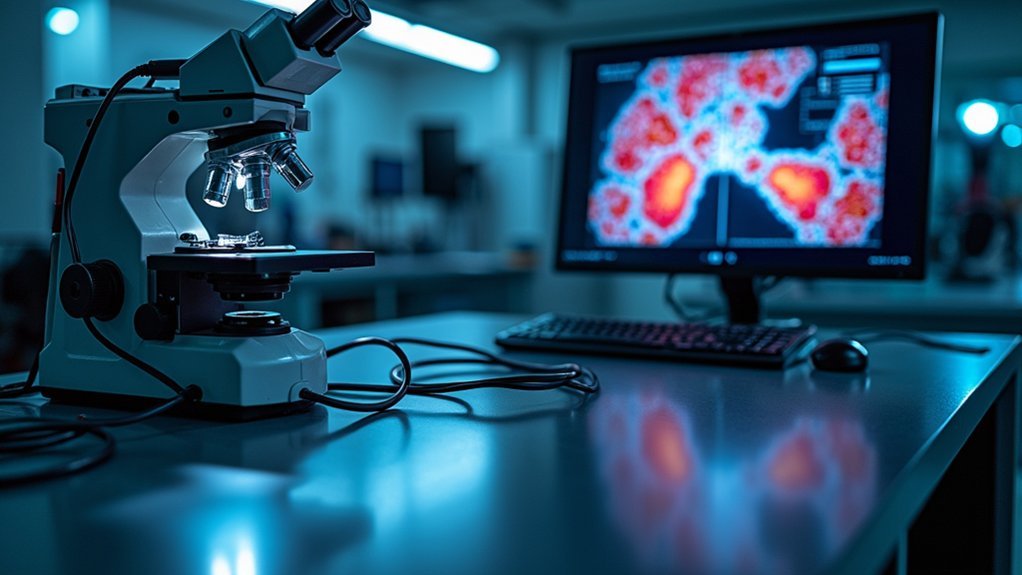
When upgrading your imaging systems, you’ll find that modern stage tracking software solutions prioritize seamless integration with your existing microscopy hardware.
These solutions support common protocols like USB, RS-232, and Ethernet, ensuring connectivity across diverse microscopy platforms.
Standardized communication protocols ensure your tracking software connects flawlessly with any microscope in your lab.
The integration capabilities of top tracking software deliver significant workflow advantages:
- Real-time monitoring and control of sample positioning for high-resolution imaging
- Customizable interfaces that adapt to your specific microscopy applications
- APIs and plugins that connect with popular imaging platforms to streamline workflows
- Seamless data sharing between acquisition systems and data analysis tools
Real-Time Applications: How Stage Tracking Enhances Live Cell Imaging
You’ll witness unprecedented clarity in cell migration studies when using stage tracking software that follows individual cells through their entire movement cycle.
Dynamic tracking capabilities allow you to observe cellular responses to stimuli in real time, capturing critical moments that would otherwise be missed with traditional imaging methods.
This technological advancement transforms your ability to analyze complex migration patterns across multiple cell populations simultaneously, revealing subtle behavioral differences that can lead to significant research insights.
Dynamic Tracking Capabilities
Real-time imaging of living cells presents unique challenges that stage tracking software elegantly solves.
With dynamic tracking capabilities, you’ll maintain precise focus on specific regions of interest as cells migrate, divide, or respond to stimuli. These sophisticated systems compensate for environmental disturbances, ensuring uninterrupted visualization throughout extended imaging sessions.
- Advanced algorithms automatically adjust for microscope drift and vibrations, preventing sample loss during critical observations
- Real-time data visualization allows you to analyze cellular interactions instantly, accelerating discovery timelines
- Seamless integration with existing microscopy platforms enhances workflow efficiency without disrupting established protocols
- Spatial accuracy features enable tracking of multiple cells or subcellular structures simultaneously across complex tissue environments
Cell Migration Analysis
As cells navigate through complex microenvironments, stage tracking software transforms how you monitor and analyze their movement patterns.
You’ll capture dynamic cellular behaviors with unprecedented spatial precision while the system automatically adjusts focus and positioning to maintain peak observation conditions.
With real-time stage tracking during live cell imaging, you’ll quantify cellular dynamics by measuring velocity, directionality, and migration patterns as they unfold.
The technology synchronizes with environmental controls to maintain prime conditions, ensuring your cells behave naturally throughout extended imaging sessions.
Whether you’re studying developmental processes or cancer cell invasion, stage tracking solutions deliver reproducible, reliable results.
You’ll eliminate the guesswork from cell migration analysis and gain valuable insights into cellular behaviors that were previously difficult to document with traditional imaging methods.
Evaluating Return on Investment: Cost-Benefit Analysis of Stage Tracking Solutions
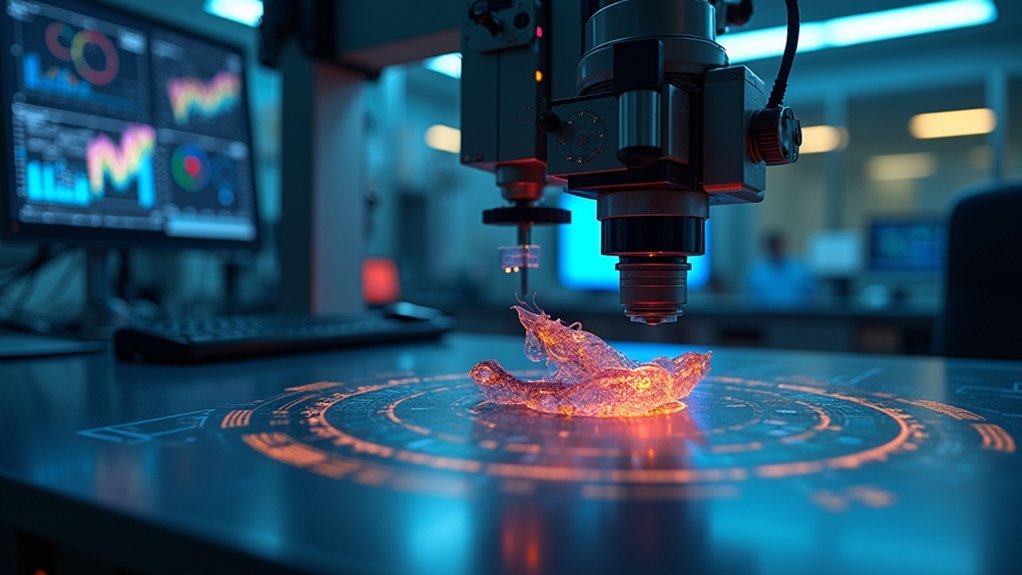
When laboratory managers consider investing in new technology, the financial impact often becomes the deciding factor. Stage tracking software delivers compelling ROI, with labs achieving up to 30% returns within the first year through automation and error reduction.
Stage tracking software provides exceptional first-year ROI through automation, delivering up to 30% returns for forward-thinking labs.
You’ll see substantial labor costs decrease as these systems save approximately 15 hours of manual tracking weekly.
Consider these tangible benefits:
- 25% reduction in experiment turnaround times, boosting your lab’s throughput and productivity
- 20% increase in project success rates through enhanced imaging accuracy
- Significant reduction in human error, leading to more reliable research outcomes
- Long-term scalability that adapts to increasing workloads and technological advances
These solutions don’t just streamline operations—they transform your lab’s efficiency while providing sustainable financial advantages.
Frequently Asked Questions
What Software Is Used in Medical Labs?
In medical labs, you’ll use LIMS for workflow management, ELNs for digital documentation, inventory systems for material tracking, advanced imaging software for diagnostics, and cloud-based solutions for remote data access and collaboration.
What Is Software That Records and Manages a Labs Overall Process Called?
You’re looking for Laboratory Information Management System (LIMS). It’s software that thoroughly records and manages your lab’s overall processes, from sample tracking to data management, while ensuring regulatory compliance and workflow optimization.
Is Lims Free?
No, LIMS isn’t typically free. You’ll find most require subscription fees or licensing costs. While some offer free trials or open-source options exist, these often lack extensive support and advanced features of paid versions.
Which Software System Records Manages and Stores Data for Clinical Laboratories?
Laboratory Information Management Systems (LIMS) record, manage, and store your clinical laboratory data. You’ll find LIMS solutions from providers like Thermo Fisher and LabWare that integrate with your instruments and support regulatory compliance.
In Summary
You’ve now explored the critical world of stage tracking software in laboratory imaging. By selecting the right solution—whether commercial or open-source—you’ll enhance precision, streamline workflows, and elevate your research capabilities. Remember to prioritize features that align with your specific applications, integration needs, and budget constraints. Your investment in quality stage tracking will pay dividends in research reliability and efficiency.
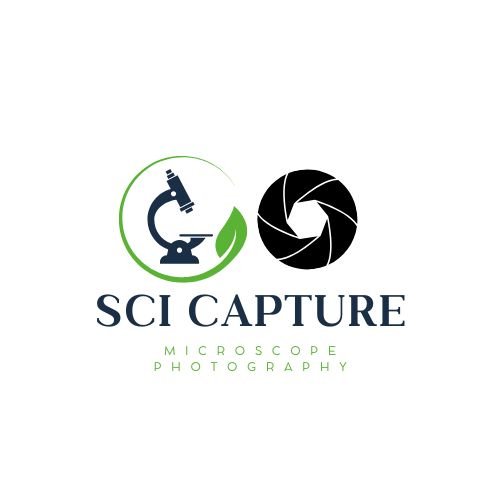

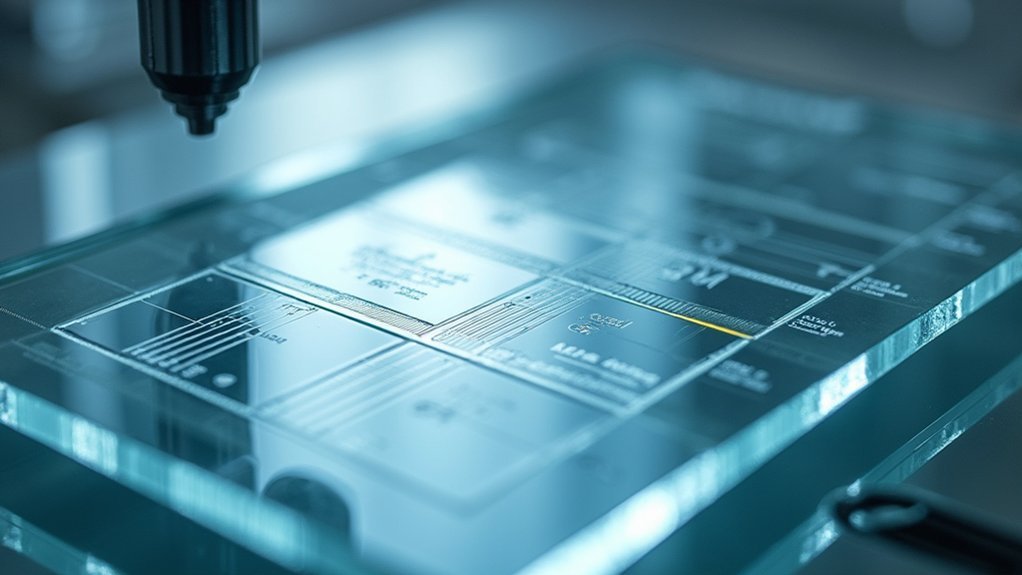


Leave a Reply